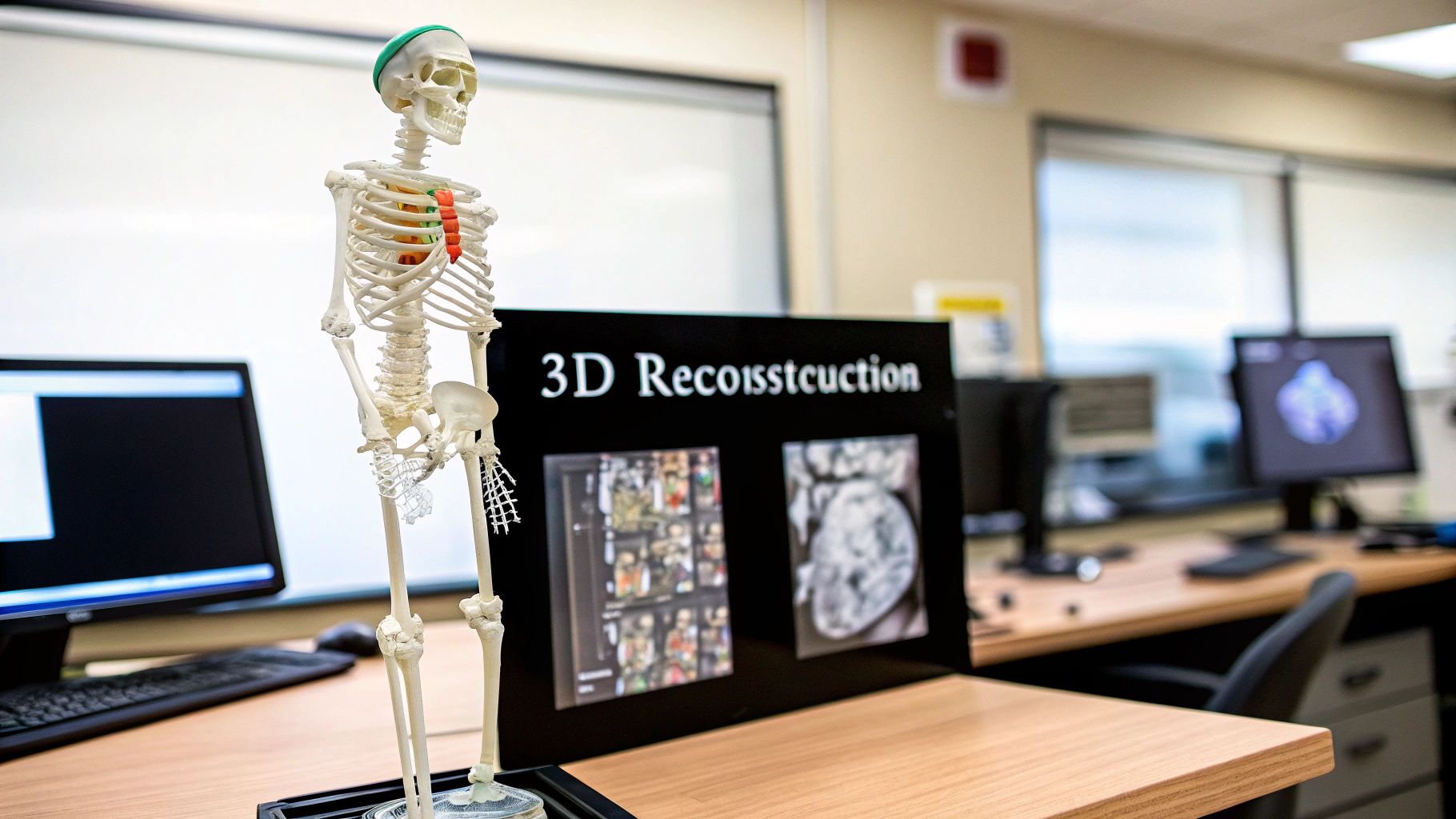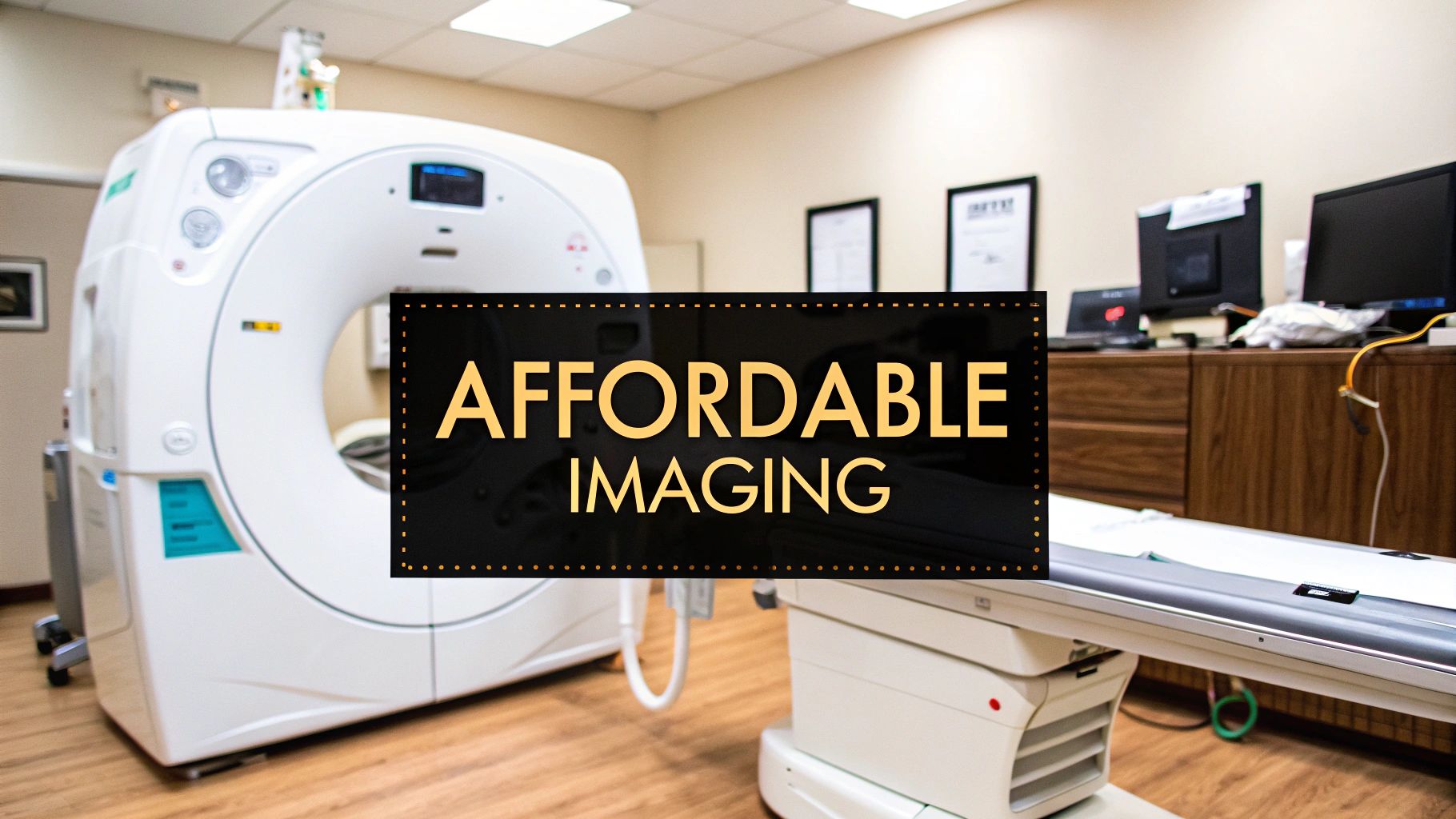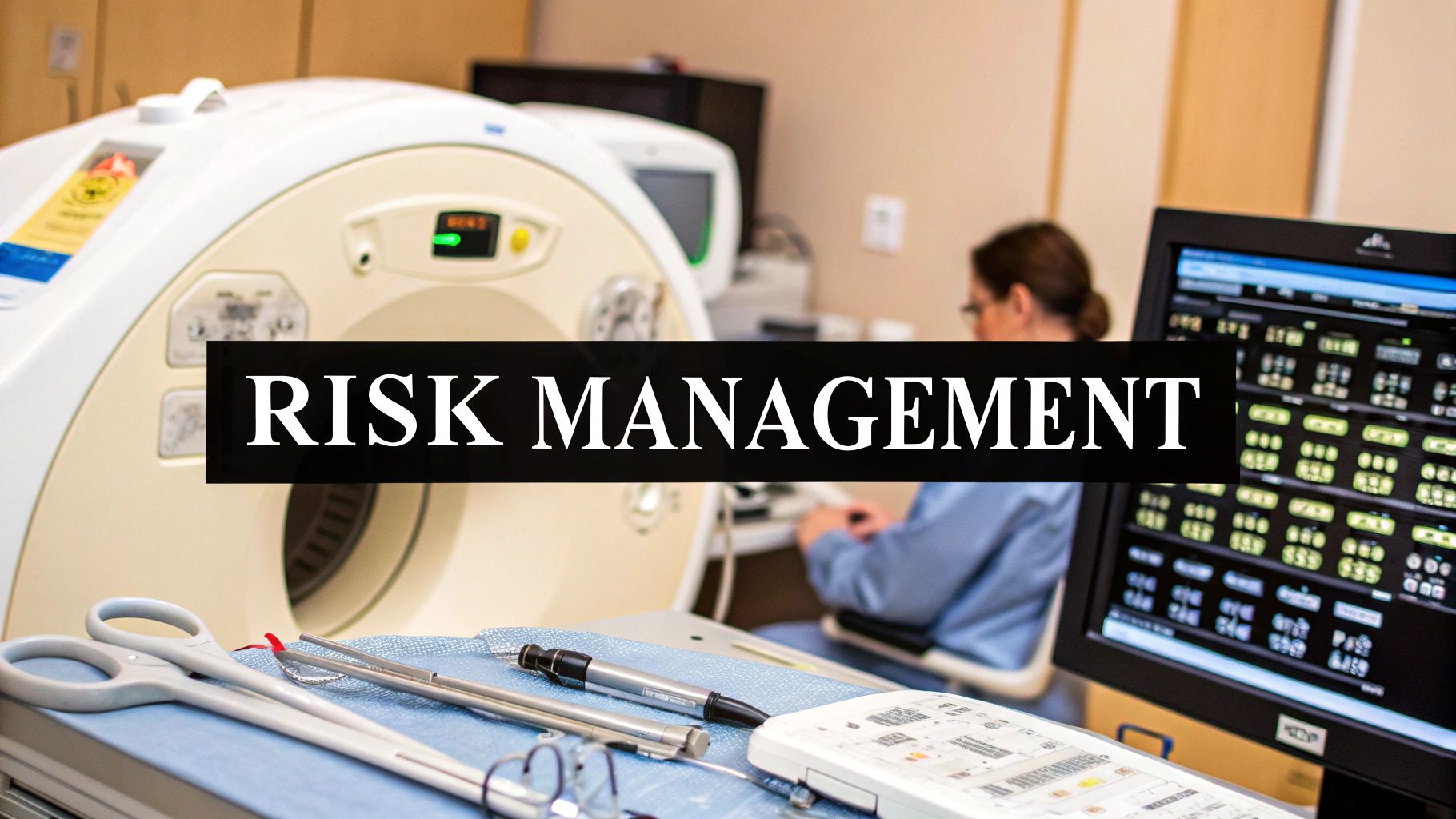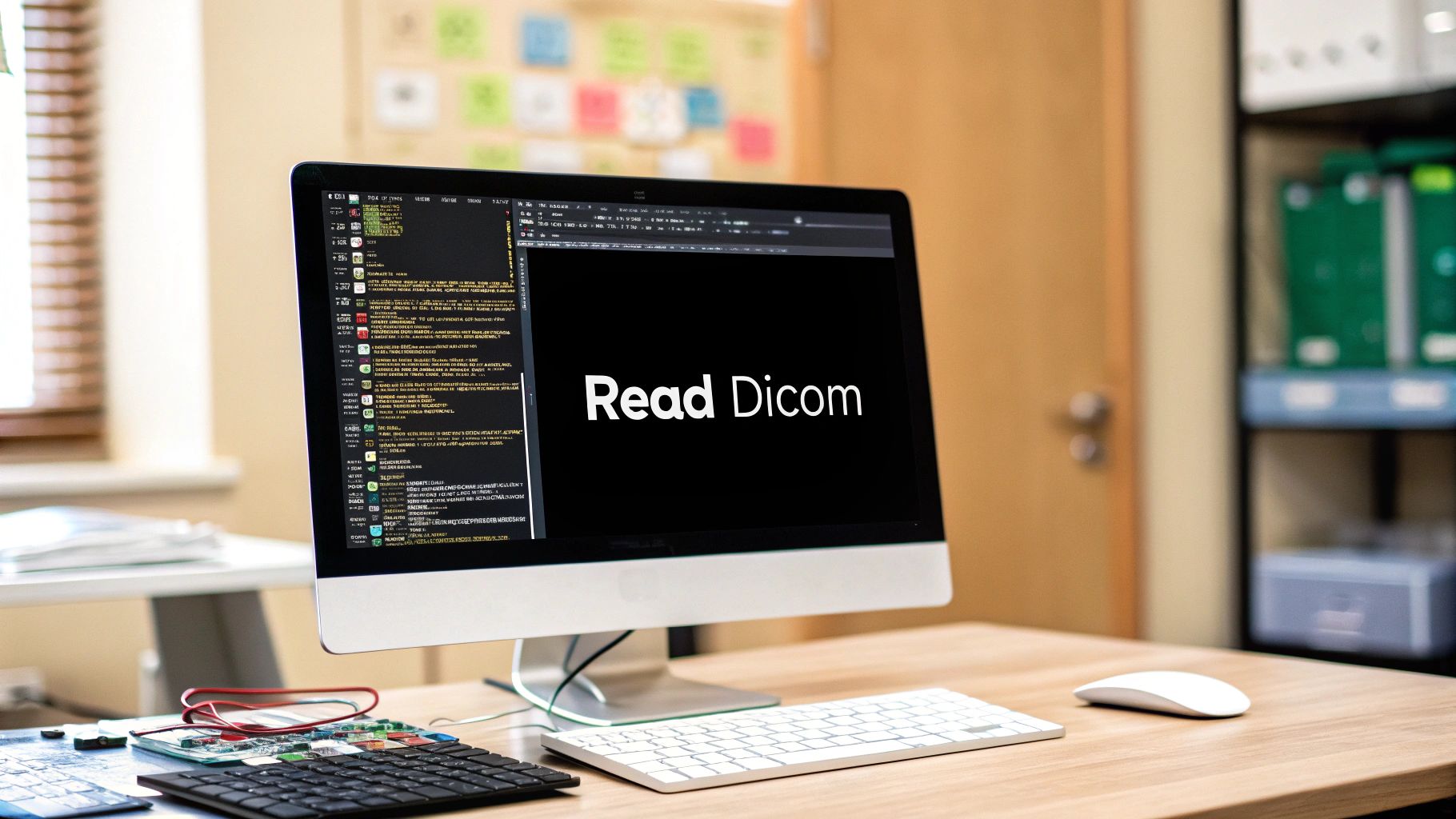The Science Behind Creating 3D From 2D Images

Creating 3D models from 2D images might seem incredible, but the process is grounded in scientific principles. This 3D reconstruction mimics how our own vision works. We perceive depth using two eyes; similarly, 3D reconstruction algorithms use multiple 2D images. Common techniques include photogrammetry and Structure from Motion (SfM). These techniques work by finding matching points in a series of images.
Think of taking photos of an object from different angles. The software analyzes these images, identifying shared features. By pinpointing the position of these features in each image, it calculates the distance between the camera and those points. This effectively creates a depth map. The depth map, combined with the image data, allows for a 3D model to be built.
Photogrammetry and Structure From Motion
Photogrammetry traditionally used in fields like surveying and mapping, involves taking precise measurements from photographs. SfM takes this further, automatically figuring out camera positions and orientations. This makes SfM especially useful when precise camera control isn't possible, like with drone footage or casual snapshots. Creating 3D models from 2D images is becoming increasingly important. The global market for 3D reconstruction is expected to see significant growth. This process is essential in fields like computer vision, robotics, and virtual reality, taking multiple images and turning them into a three-dimensional form. Techniques like Surface Rendering are often used, visualizing complex structures. With over 743 papers available on platforms like Papers With Code, research in 3D reconstruction is extensive. Recent advancements in deep learning have further improved accuracy and efficiency. Now, detailed reconstructions can be created from fewer images. Learn more about 3D reconstruction here.
AI's Role in 3D Reconstruction
Artificial intelligence (AI) has greatly simplified and enhanced 3D reconstruction. AI algorithms now automate much of the process, including identifying matching points, fixing distortions, and filling in gaps. This makes the technology more accessible to a wider range of users. Specialized expertise is no longer required.
This wider access means that high-quality 3D modeling from 2D images is no longer limited to specialized settings. Individuals and businesses can use this technology for various applications, from preserving historical artifacts and designing products to creating immersive virtual experiences. Understanding the science behind this technology helps users choose the best approach for their specific project.
Essential Tools To Create 3D From 2D Images That Actually Work
Creating compelling 3D models from 2D images is a multifaceted process. Choosing the right tools is paramount for achieving professional results. This exploration covers a range of software, from professional applications to accessible freeware and mobile apps, helping you find the perfect fit for your needs and budget.
Professional 3D Reconstruction Software
For high-fidelity models and advanced features, professional software packages offer powerful capabilities. These are designed for complex projects requiring intricate detail and precise measurements, often used in fields like architecture, engineering, and cultural preservation.
-
Agisoft Metashape: Known for its robust photogrammetry, Agisoft Metashape produces high-resolution 3D models from still images. Favored by professionals for its accuracy and comprehensive toolset, it allows precise control over the reconstruction process and handles large datasets effectively. However, its advanced features come with a learning curve and a higher price tag.
-
RealityCapture: Another leading option, RealityCapture excels in processing large-scale projects with speed and efficiency. Its high-performance algorithms generate detailed 3D meshes and textures, making it suitable for demanding applications like creating digital twins. The user interface is generally considered more intuitive than Metashape, but it also carries a significant cost.
Accessible Freeware and Open-Source Options
If you're new to 3D reconstruction or working on personal projects, freeware and open-source alternatives offer impressive capabilities without the financial investment. These tools often provide a simpler user experience and active community support.
-
Meshroom: This open-source software uses Structure from Motion (SfM) algorithms and a user-friendly interface to generate 3D models from image sequences. Meshroom is an excellent starting point for learning 3D reconstruction, although less feature-rich than professional options. It requires some technical understanding to optimize settings.
-
COLMAP: A robust open-source photogrammetry solution, COLMAP stands out for its speed and accuracy, particularly in challenging lighting. While its user interface is less polished than Meshroom's, it's highly regarded for its customization options, algorithmic efficiency, and robust processing.
Mobile Applications for 3D Capture
Mobile applications have further expanded the accessibility of 3D reconstruction. These tools bring 3D scanning directly to your smartphone, making model creation on the go easier than ever.
-
Polycam: Polycam is a popular mobile 3D scanner allowing you to capture models of objects and scenes using your smartphone's camera. While not as precise as dedicated software, it offers a quick and intuitive method, ideal for casual use and quick visualizations.
-
3D Scanner App: Another notable mobile option, 3D Scanner App provides a variety of scanning modes, including object and room scanning. It balances ease of use and functionality, allowing detailed 3D model capture directly on mobile devices.
To help you compare these tools effectively, we've compiled the following table:
Top Tools for Creating 3D from 2D Images: Comparison of leading software options based on key features, pricing, ease of use, and specialized capabilities.
| Software | Price Range | Difficulty Level | Best For | Key Features |
|---|---|---|---|---|
| Agisoft Metashape | Paid (Professional) | Advanced | Professional, High Accuracy | Dense point clouds, Georeferencing |
| RealityCapture | Paid (Professional) | Intermediate | Large-scale Projects, Speed | Fast processing, Detailed Textures |
| Meshroom | Free/Open Source | Beginner/Intermediate | Learning, Personal Projects | User-friendly interface, SfM workflow |
| COLMAP | Free/Open Source | Intermediate/Advanced | Research, Customization | Algorithmically efficient, Robust processing |
| Polycam | Freemium | Beginner | Mobile Scanning, Quick Capture | Easy-to-use, Object and Scene Scanning |
| 3D Scanner App | Freemium | Beginner | Mobile Scanning, Versatile Modes | Object, Room, and AR Scanning |
This table provides a quick overview of the strengths and weaknesses of each software option. Consider your budget, technical skills, and project requirements when making your choice.
Choosing the Right Tool
The ideal 3D reconstruction tool depends on your specific needs. Agisoft Metashape and RealityCapture are strong choices for professional applications requiring high precision. Meshroom and COLMAP offer excellent free alternatives for beginners and personal projects. Mobile apps like Polycam and 3D Scanner App provide convenient options for quick 3D captures. Selecting the right tool empowers you to bring your vision to life, regardless of your skill level or budget.
From Flat to Dimensional: Your Step-by-Step 3D Creation Path

Now that you understand the tools available, let's explore the practical steps involved in creating 3D models from 2D images. This detailed walkthrough, incorporating insights from industry professionals, will provide you with the knowledge to produce high-quality 3D models.
Preparation: The Foundation of Success
Before you even start taking pictures, proper preparation is crucial. This initial phase greatly influences the final quality of your 3D reconstruction. Think of it as laying the groundwork for a successful project.
- Image Selection: Opt for high-resolution images with minimal blur or distortion. Crisp, clear images give the software the necessary data for accurate object reconstruction.
- Camera Settings: Maintaining consistent camera settings is essential. Use a fixed focal length throughout your image sequence for best results. Avoid automatic adjustments, as these can introduce inconsistencies.
- Object Placement: Pay attention to the background against which your object is placed. A contrasting, non-reflective background helps the software differentiate the object from its surroundings.
Capturing Images: A Strategic Approach
The method you use for capturing images significantly impacts the reconstruction process. A systematic approach minimizes errors and ensures complete coverage of your subject.
- Overlapping Images: Take pictures with substantial overlap (50-70% is recommended). This overlap provides the software with enough redundant information to identify corresponding points and accurately calculate depth.
- Varying Angles: Photograph the object from various angles, including different elevations and perspectives to create a comprehensive 3D representation. Visualize encircling the object, capturing its form from every angle.
- Consistent Lighting: Lighting is vital for capturing texture detail. Soft, diffused lighting minimizes harsh shadows and reflections, which can negatively impact the reconstruction process.
Post-Processing: Refining Your 3D Model
After capturing your images, post-processing transforms the raw reconstruction into a polished 3D model. Think of this stage as refining a sculpture, starting with a rough shape and meticulously adding detail.
- Mesh Optimization: 3D modeling software often generates a dense mesh. Optimizing this mesh reduces the polygon count without compromising visual fidelity, resulting in smaller file sizes and improved performance.
- Texture Mapping: Applying textures brings realism to your 3D model. Use high-resolution textures aligned with the model's UV coordinates to create a visually compelling result. This step adds the final layer of detail.
- Refinement and Detailing: This stage usually involves manual cleanup and refinement. Remove any artifacts or errors in the mesh, adjust textures, and add finer details for enhanced realism.
Avoiding Common Mistakes
Understanding common pitfalls can save you time and prevent frustration. These mistakes can hinder progress, especially for those new to 3D modeling.
- Insufficient Overlap: Not capturing enough overlap between images results in incomplete reconstructions and gaps in the 3D model.
- Inconsistent Lighting: Varying lighting conditions create difficulties for the software, leading to uneven textures and inaccuracies.
- Ignoring Background: A cluttered or reflective background can confuse the software and make it difficult to isolate the object.
By following these steps and avoiding these common errors, you can effectively create 3D models from 2D images using various software tools, achieving professional results regardless of your experience. This empowers you to utilize this powerful technique for a wide array of applications, from visualizing products to creating architectural models.
Single-Image 3D: Turning the Impossible Into Reality
Creating a 3D model from multiple 2D images is a well-established technique. However, generating a 3D representation from a single 2D image presents a much more significant challenge. This is the frontier of 3D reconstruction, pushing the limits of what's achievable with computer vision. It's akin to sculpting a complete statue from only its silhouette – a seemingly impossible feat.
The Power of Neural Networks
This "impossible" task is becoming achievable thanks to advancements in neural networks. These intricate algorithms, inspired by the human brain, can learn to discern three-dimensional information from a single image. They do this by identifying subtle patterns and cues within the image, often imperceptible to the human eye.
For instance, variations in shading and texture can reveal clues about an object's shape and depth. This ability to extract 3D data from limited 2D input is transforming fields like product design, medical imaging, and architectural rendering.
Key Deep Learning Approaches
Two leading deep learning approaches are propelling this field: Generative Adversarial Networks (GANs) and Neural Radiance Fields (NeRFs). GANs operate by pitting two networks against each other: one generates 3D models, while the other attempts to differentiate them from real 3D objects. This competition drives the generator to create increasingly realistic models.
NeRFs, alternatively, represent a scene as a continuous function. This allows for highly detailed 3D reconstructions from a limited set of viewpoints. Both approaches provide unique strengths for tackling single-image 3D creation.
Real-World Applications
The applications of single-image 3D reconstruction are already emerging across diverse industries. In product visualization, a single image can be used to create an interactive 3D model for online shoppers. In architectural rendering, a single photograph can generate a 3D model of a building, simplifying the design process.
Even in areas like medical imaging, constructing 3D models from limited 2D image data is becoming increasingly valuable. Achieving high-fidelity 3D reconstructions from a single 2D image, however, remains a significant hurdle. This is particularly true when capturing fine details and semantic attributes.
For example, research on 3DAttriFlow seeks to improve accuracy by isolating and integrating semantic features from 2D images into the 3D reconstruction process. As of March 2022, these novel approaches have shown potential in accurately translating the complexities of the original 2D image into the resulting 3D shapes. Learn more about this research here.
Limitations and Future Directions
Despite these advancements, single-image 3D reconstruction still faces limitations. The accuracy and detail of the generated models can depend on the input image's quality and the scene's complexity. Creating highly detailed 3D models from a single image often requires substantial computational resources.
However, this technology is rapidly evolving. With ongoing research and development, single-image 3D creation is progressing toward broader adoption. This promises to democratize access to powerful 3D modeling capabilities. This means that soon, creating high-quality 3D models from single 2D images might become as common as taking a picture.
Medical Transformations: 3D Models From 2D Healthcare Images
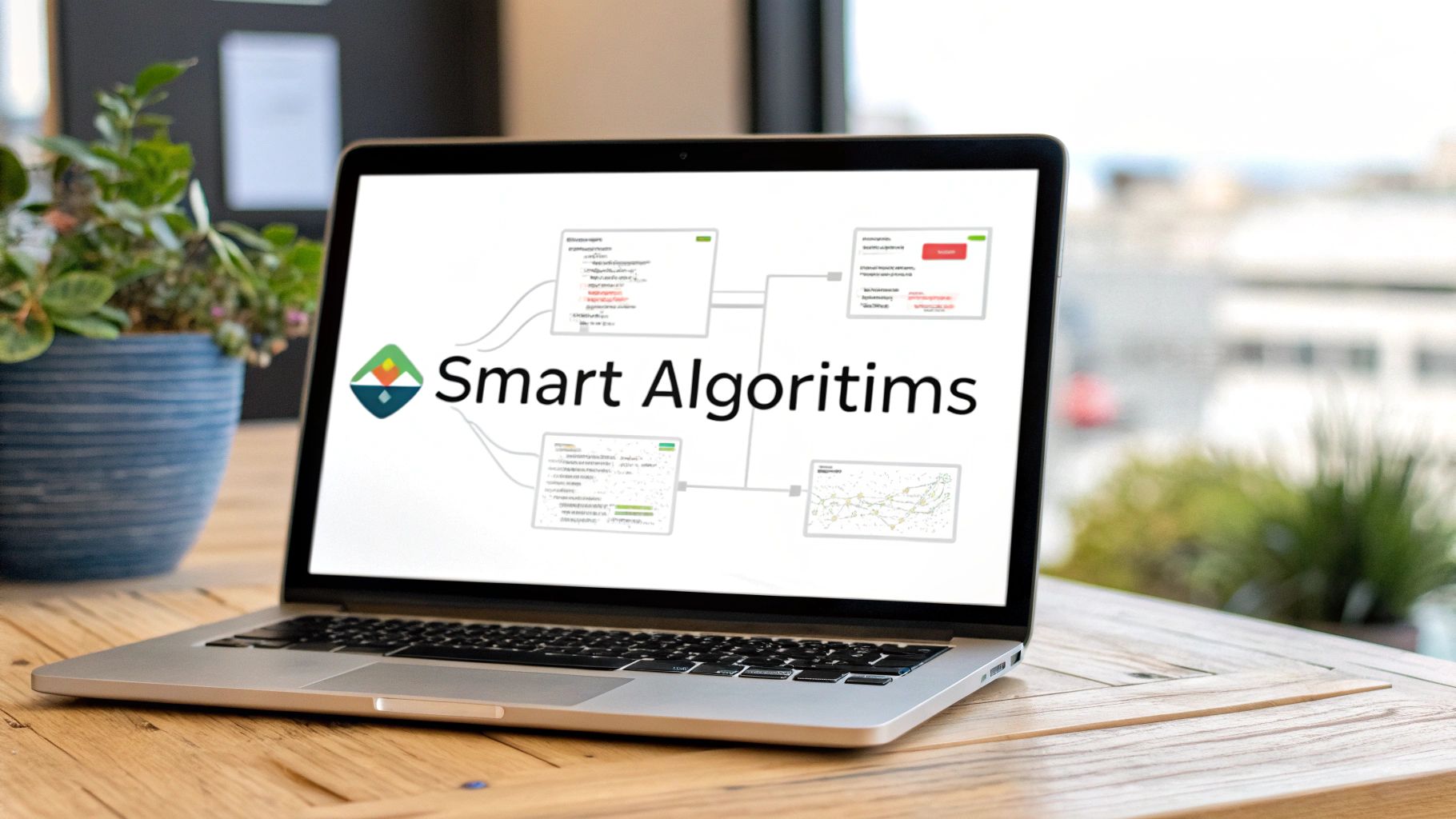
The medical field is experiencing a significant advancement: the creation of 3D models from 2D medical images. This technology is changing how healthcare professionals diagnose illnesses, plan treatments, and educate their patients. It gives medical practitioners a detailed anatomical view, allowing them to examine the human body with greater precision.
Enhanced Diagnostics and Treatment Planning
Constructing 3D models from 2D images provides medical specialists like radiologists with a more comprehensive understanding of a patient's anatomy. While a traditional X-ray offers a limited, two-dimensional perspective, a 3D model built from a series of 2D images gives a complete, interactive view that can be rotated and zoomed. This improved visualization leads to more accurate diagnoses and assessments, especially for complex medical conditions.
This 3D modeling technology is especially useful for pre-surgical planning. Surgeons can use these models to virtually practice complex procedures before operating, minimizing potential risks and optimizing their surgical approach. This "virtual rehearsal" significantly increases the chances of a successful outcome. Creating these 3D models from limited 2D images, particularly in fields like radiography, has historically been challenging. However, innovative methods are addressing this limitation. Learn more about the historical challenges of 3D medical imaging here.
Improved Patient Communication and Education
3D models are also valuable tools for patient education. By visualizing the affected area in three dimensions, patients gain a better understanding of their own medical conditions. This clear visual representation improves communication between doctors and patients, leading to more informed decisions and a stronger doctor-patient relationship. Explaining a complex bone fracture, for example, becomes much simpler with a 3D model.
Specialized Algorithms for Anatomical Reconstruction
Creating accurate 3D models from 2D medical images requires specialized algorithms. These algorithms must consider the distinct properties of anatomical structures and different tissue types. The precision of these algorithms is critical, as even minor inaccuracies can have significant medical implications. For example, these algorithms must accurately differentiate between bone, muscle, and other tissue types.
Accuracy Requirements and Advancements
Medical 3D reconstruction demands a higher level of accuracy than other 3D modeling applications. The algorithms used must adhere to strict standards, ensuring the models precisely represent patient anatomy. This need for precision drives ongoing research and development in the field. New techniques constantly emerge, expanding the possibilities of medical imaging and improving the effectiveness of creating 3D models from 2D images.
Innovations such as Digitally Reconstructed Radiographs (DRRs) and techniques like the Non-Stereo Corresponding Contour Method (NSCC) contribute to more accurate 3D reconstructions, ultimately benefiting patient care. This constant pursuit of greater precision highlights the commitment of medical professionals and researchers to improving patient outcomes through the power of 3D visualization. These advances aren't merely theoretical; they represent real improvements in patient care by offering a clearer understanding of the complexities of the human body.
Real-World Success: How Industries Create 3D From 2D Images
From architectural blueprints to interactive video game characters, the ability to generate 3D models from 2D images is changing how industries operate. This isn't a futuristic concept; it's happening now. Businesses are actively using this technology to solve problems, create new opportunities, and push innovation forward. Let's explore some compelling examples of this technology's real-world impact.
Architecture and Renovation: Streamlined Design and Planning
Imagine needing to renovate a historic building. Traditionally, this involved costly and time-intensive laser scanning to create accurate 3D models. Now, architectural firms are using photogrammetry—a technique to create 3D models from 2D images—to reconstruct buildings from simple photographs. This allows for detailed renovation planning without the high cost of traditional methods.
This image-based approach not only saves money but also simplifies the process of visualizing potential changes and collaborating on design decisions. It’s a win-win for both the firm and the client.
E-Commerce: Enhancing the Shopping Experience
Online shopping often lacks the tactile experience of examining a product in person. This can lead to increased return rates due to unmet expectations. To address this, e-commerce businesses are transforming standard product photos into interactive 3D models.
These 3D models allow customers to virtually interact with products, viewing them from every angle. This enhanced interaction leads to a notable increase in conversion rates and a decrease in product returns. The result? Increased sales and reduced costs for businesses.
Entertainment: Accelerating Production Timelines
The entertainment industry, especially game development and film studios, benefits significantly from 2D to 3D conversion. Creating digital assets from concept art can be a lengthy process. By using techniques like photogrammetry and AI-powered reconstruction, developers and studios can quickly generate 3D models of characters, props, and environments.
This streamlines the production pipeline, resulting in significant time and cost savings. The faster turnaround allows for quicker prototyping and iteration, ultimately leading to higher-quality final products.
Emerging Applications: Expanding the Possibilities
The applications of 2D to 3D conversion extend beyond established industries, creating exciting new opportunities in various fields. Here are just a few examples:
-
Education: Interactive 3D models are revolutionizing the classroom, making learning a more engaging experience. Students can closely examine historical artifacts, explore intricate biological structures, or even design their own 3D creations.
-
Forensics: 3D reconstruction from crime scene photos allows investigators to analyze evidence and reconstruct accidents with increased accuracy. This enhanced visualization can be crucial for understanding complex events.
-
Cultural Preservation: Creating digital 3D replicas of delicate historical artifacts allows for their preservation and study, preventing damage to the original objects. This technology ensures these valuable pieces of history are accessible for future generations.
To further illustrate the diverse uses of this technology, the following table provides a sector-by-sector overview. It highlights the key applications, resulting benefits, and technological requirements of 2D to 3D conversion within different industries.
Industry Applications of 2D to 3D Conversion
| Industry | Key Applications | Business Benefits | Technology Requirements |
|---|---|---|---|
| Architecture | Building reconstruction, renovation planning | Cost savings, improved planning accuracy | Photogrammetry software, high-resolution images |
| E-Commerce | Interactive 3D product models | Increased conversion rates, reduced returns | 3D modeling software, product photography |
| Entertainment | Digital asset creation, environment design | Faster production timelines, reduced costs | AI-powered reconstruction, concept art |
| Education | Interactive learning models, virtual field trips | Enhanced engagement, deeper understanding | 3D modeling software, 3D scanning |
| Forensics | Crime scene reconstruction, accident analysis | Improved accuracy, better evidence presentation | Photogrammetry software, forensic imaging |
| Cultural Preservation | 3D digitization of artifacts | Preservation of fragile objects, improved access | 3D scanning, high-resolution photography |
As the table clearly demonstrates, the benefits of 2D to 3D conversion are wide-ranging and impactful. From cost savings and efficiency gains to improved learning and preservation efforts, this technology offers tangible advantages across diverse sectors.
These are just a few examples of how the ability to create 3D models from 2D images is reshaping industries. As the technology continues to advance and become more readily available, we can anticipate even more innovative applications to emerge, further solidifying the potential of 2D to 3D conversion. This ability to transform flat images into interactive 3D models is more than just a technological accomplishment; it’s a driver of progress and innovation across numerous fields.
The Future of Creating 3D From 2D Images
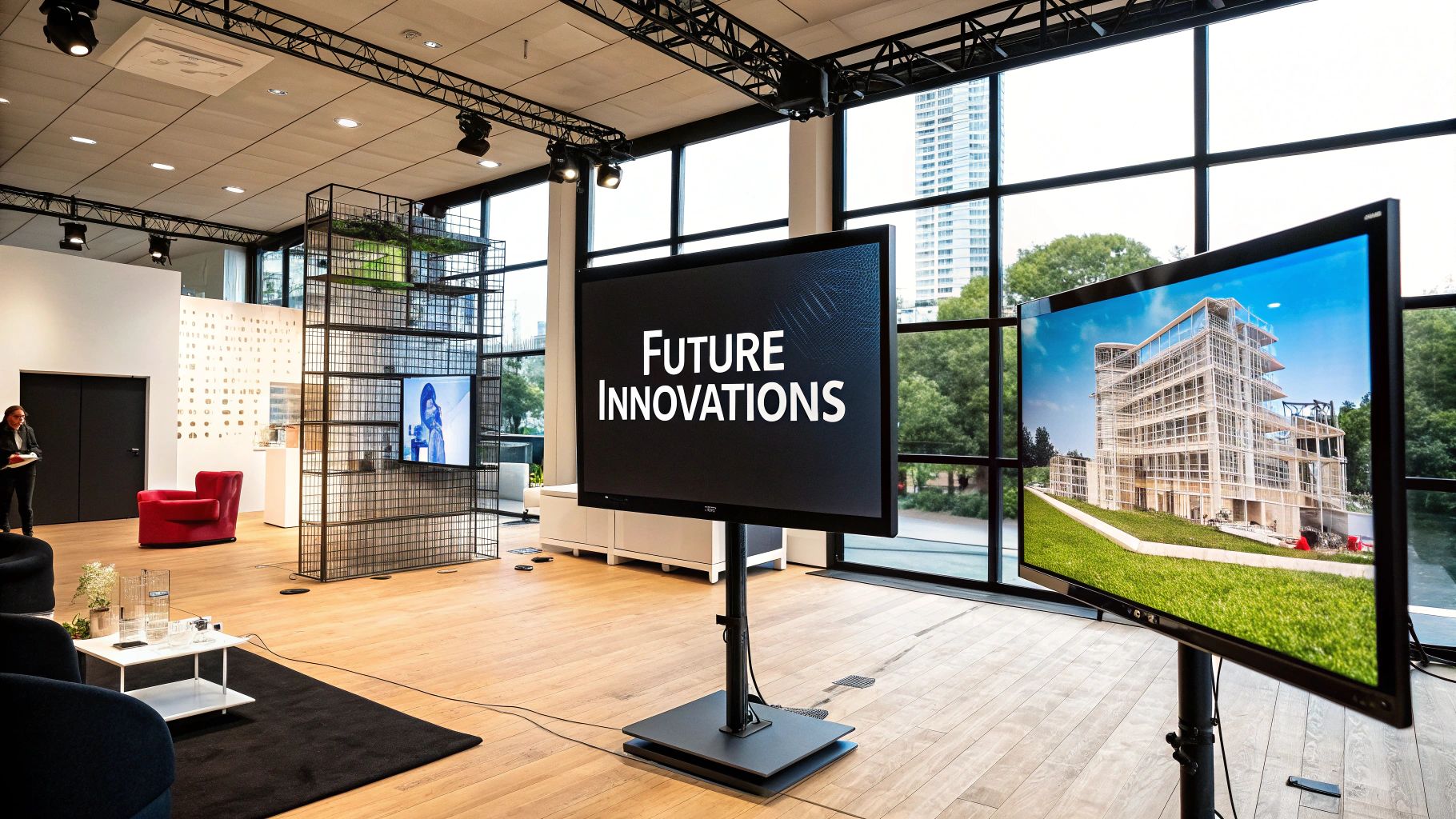
The process of generating 3D models from 2D images is constantly improving. This once highly specialized field is becoming more accessible. These advancements will likely change how we interact with the digital world, impacting everything from daily tasks to complex professional projects.
Neural Implicit Representations: Enhanced Detail
One exciting development is the use of neural implicit representations. These algorithms represent 3D shapes as continuous functions, allowing for remarkable detail and efficiency in 3D reconstruction. This means intricate shapes and fine details can be captured more accurately. This method often requires less data than traditional techniques, which streamlines the process.
Imagine reconstructing a complex sculpture from just a few photographs. Neural implicit representations can capture even the subtlest textures and curves, producing a highly accurate 3D model. This opens up possibilities for more realistic and immersive digital experiences.
Integrating With AR/VR: New Immersive Experiences
The combination of 3D reconstruction with augmented reality (AR) and virtual reality (VR) is creating exciting new possibilities. Imagine stepping into a 3D world built from a single 2D image. This integration could lead to truly immersive experiences, blurring the lines between physical and digital realities. Fields like gaming, education, and online shopping could be revolutionized.
The ability to create 3D models from 2D images in real-time also unlocks new opportunities for interactive AR applications. Users could scan real-world objects and interact with virtual versions, fundamentally changing how we engage with our surroundings.
Edge Computing: 3D on Your Devices
Advances in edge computing, which processes data closer to its source, are bringing real-time 3D reconstruction to everyday devices. This means the complex calculations required for 3D modeling can happen directly on your smartphone or tablet, without the need for powerful servers.
This shift towards edge computing makes the technology accessible to a broader audience. It paves the way for new applications such as on-the-fly 3D scanning and instant AR experiences, democratizing access to 3D creation tools.
Ethical Considerations: Responsible Development
As with any rapidly advancing technology, it’s critical to consider the ethical implications of creating 3D models from 2D images. The possibility of misuse, including the creation of misleading visuals or privacy violations, demands careful consideration.
The ease of generating realistic 3D models raises concerns about authenticity and the potential for deepfakes. Addressing these issues proactively is vital for responsible development. This includes establishing ethical guidelines, creating industry standards, and implementing safeguards against misuse. By considering these factors now, we can ensure this powerful technology benefits society and fosters responsible innovation.
As 3D reconstruction continues to evolve, it’s important to stay informed about both the opportunities and challenges it presents. This knowledge empowers individuals and businesses to make informed choices, harnessing the potential of this technology responsibly and effectively. For businesses looking to integrate AI-powered medical imaging solutions, PYCAD offers expert support from data handling to model deployment. Learn more about how PYCAD can help you transform healthcare through 3D imaging at https://pycad.co.


